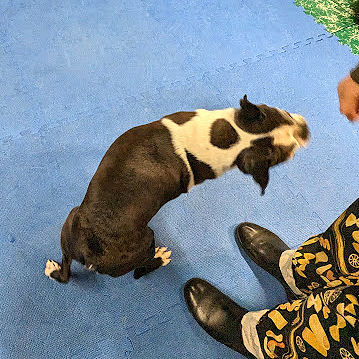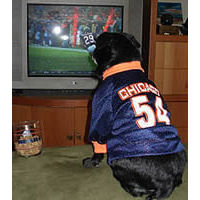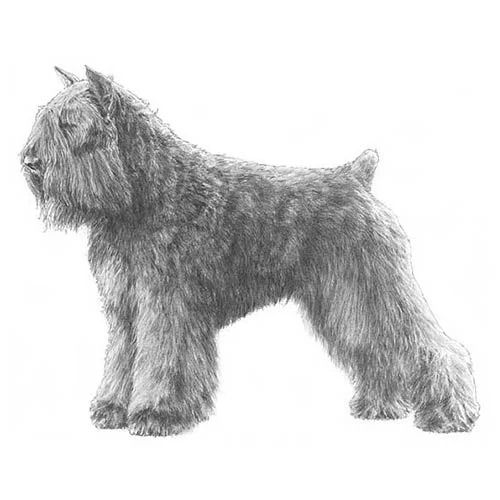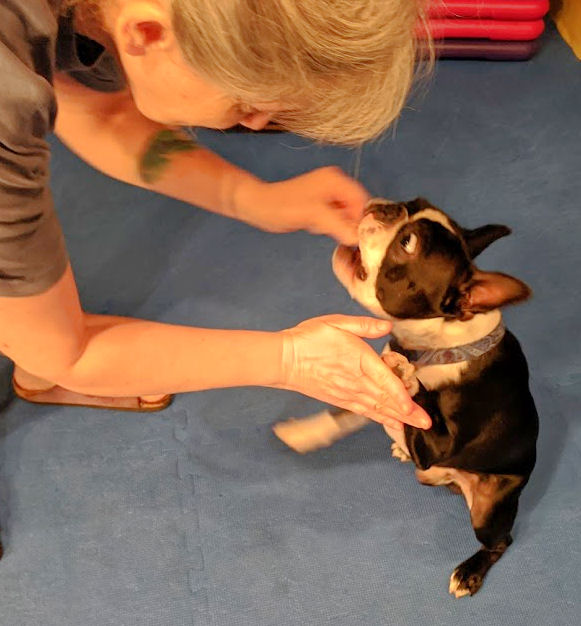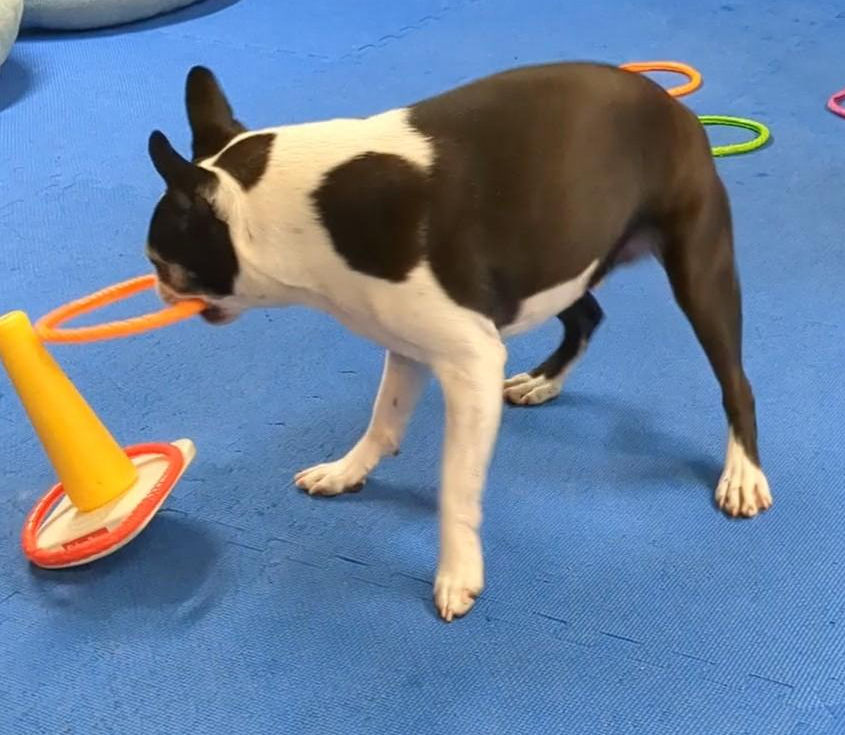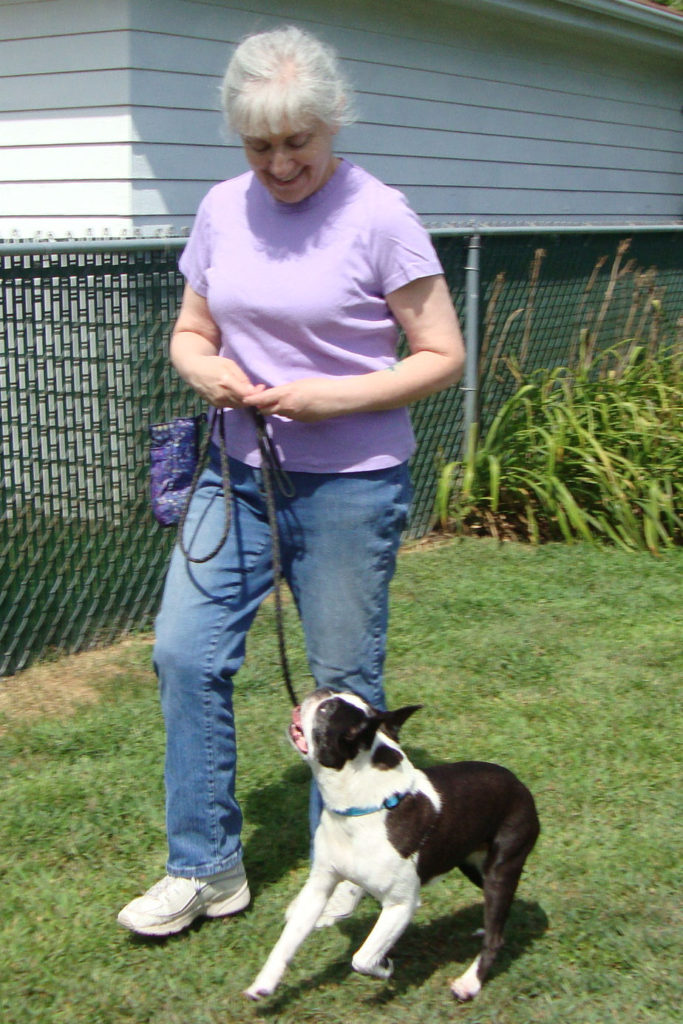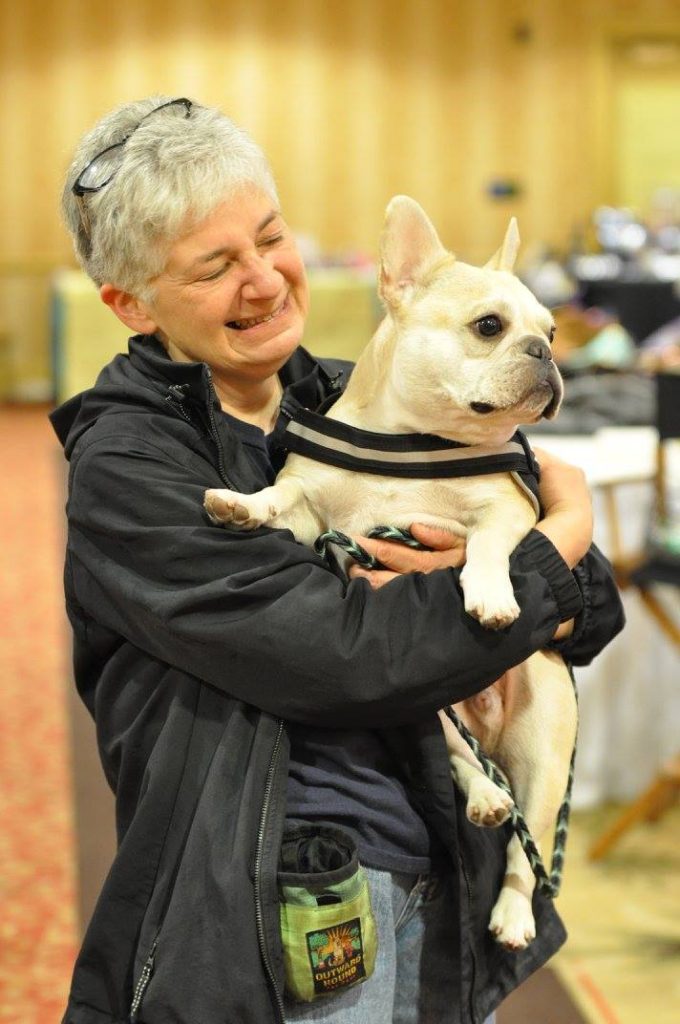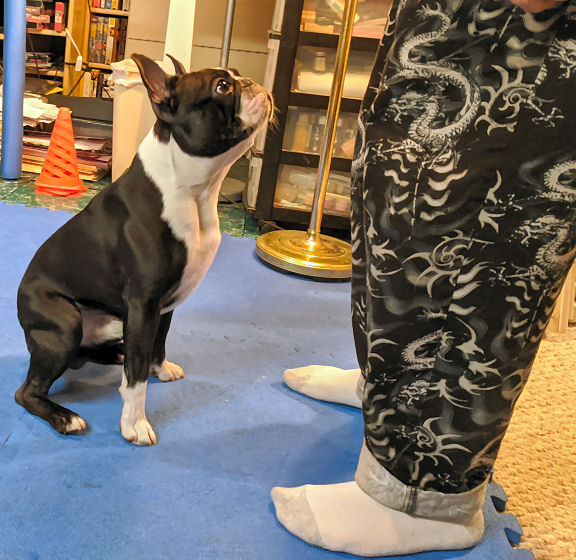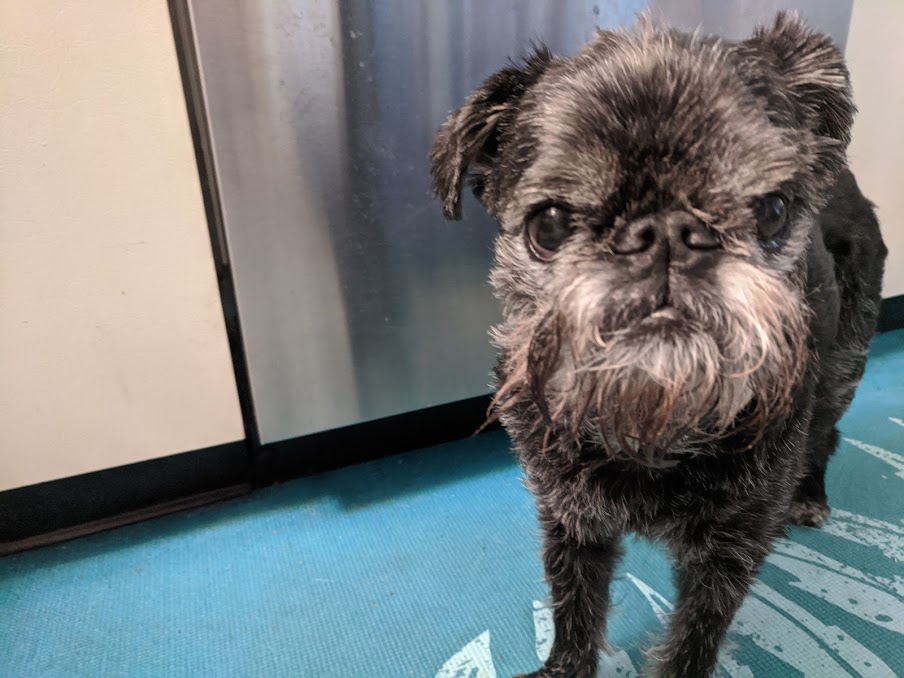Make training fun for your dog. If you want your dog to learn, make sure they’re having fun. Dogs are just like people. They learn the most when they’re engaged. And the best way to engage both dogs and people is to make sure they have fun.
The school classes where you learned the most were the ones you enjoyed. Your teacher may have been tough, but made the class interesting, relatable, and fun. And you learned. It’s the same for dogs.
It’s interesting to see what games our dog training students play with their dogs during the week between classes. We can always tell – it’s the ones the dogs are best at.
And even though we tell our students which games are the focus for the week, it doesn’t always happen. The assigned games aren’t always the most fun, so they get shoved aside.
We saw it just this week. Hope introduced a couple of “trick” games to her students, “Catch!” with popcorn (preparing for the 4th of July), and “Leg Weaving.” The dog/handler teams in the class absolutely mastered both games in just one week. Their impulse control games? Still works in progress.
School figures
If you’re a fan of figure skating competitions, there used to be a category called “school figures.” We always found them fascinating, but they’ve been dropped. We suspect it’s because most spectators (and skaters) found them tedious and uninteresting. But the precision required in school figures were fundamentals that, in the long run, improved the skaters’ performances.
There are dog games that serve the same purpose. “Whatcha Gonna Do?” isn’t the most fun game to play. Especially if you’re playing it with a puppy whose needle-sharp teeth are making holes in your hand. But it’s the heart of impulse control. And most bad dog behavior is due to a lack of impulse control.
Impulsive pup
Simon, Fran’s four-year-old Boston Terrier, is possibly the most impulsive dog we’ve ever known. If he wants to do something, his first instinct is to rush right in. It’s only through consistent refreshers of impulse control games that he’s able to think before he does.
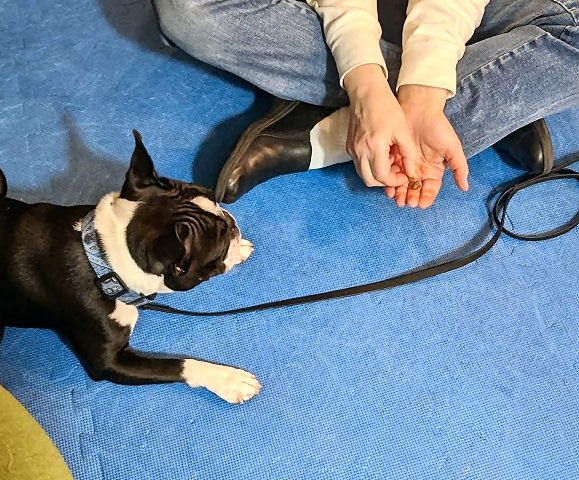
Simon adores fresh, cold water. Whenever we change the dogs’ water, several times a day, he’s always right there, ready to get the first slurp. Yesterday was hot and he was particularly anxious. As Hope lowered the bowl, he bashed in there and water spilled all over the place.
Did we yell at him? No. We put the bowl back on the counter, cleaned up the mess, and started again. And, as Hope lowered the bowl this time, she asked Simon “Whatcha Gonna Do?” He sat. The bowl reached the floor. Simon got his release word, and a good long drink.
Do it anyway
Everyone tends to spend more time doing things they think are fun. If you and your dog are having a good time playing “Catch!” you don’t have to stop at 2 Minutes.
The time limit is there to remind people the games they don’t like so much will be over soon. Your dog will pick up on your attitude, so at least pretend you like it. Smile and say “Yay! We get to play ‘Whatcha Gonna Do?’ now!” Even if you’re thinking “It’s only two minutes. We can do it for two minutes.”
The best part about sticking that smile on your face is that your dog will see it and be happy too. And if your dog is wiggling and having fun, you’ll feel it, too.

